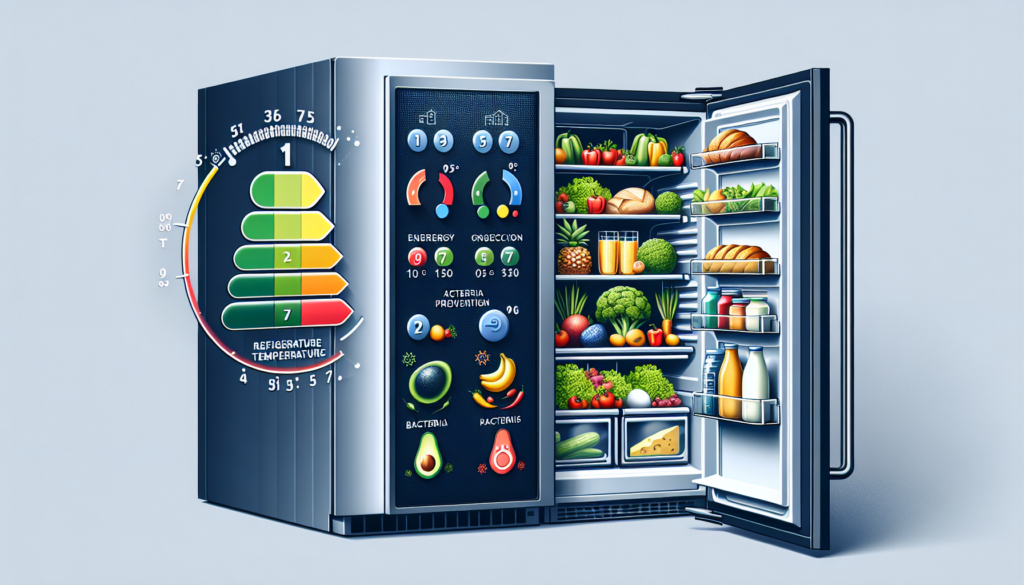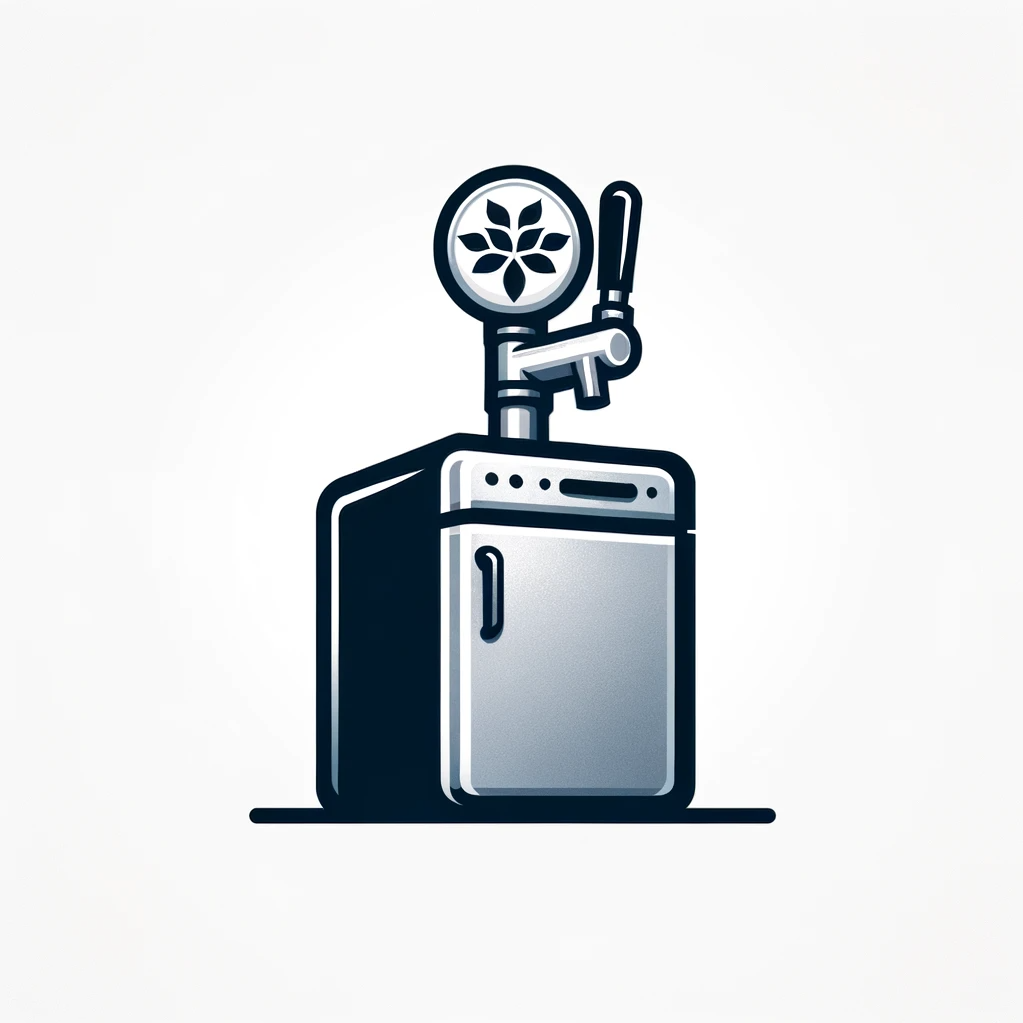Have you ever wondered what number you should set your fridge dial to, ranging from 1 to 7? It’s a common question that many people find themselves pondering. In this article, we will explore the ideal temperature setting for a fridge and provide you with some useful tips and insights to maximize the freshness and longevity of your food. So, let’s get started and find out what number your fridge should be on from 1 to 7!

CHECK OUT MINI FRIDGES AND KEGERATORS ON AMAZON
Factors to Consider
Room Temperature
When determining the ideal refrigerator temperature, one important factor to consider is the temperature of the room where the refrigerator is located. The ambient temperature plays a crucial role in the overall efficiency of the appliance. If the room temperature is quite warm, the refrigerator will have to work harder to maintain a low temperature inside. On the other hand, if the room temperature is very cold, it may be necessary to adjust the refrigerator temperature settings to prevent food from freezing.
Usage
Another factor to consider when deciding on the ideal refrigerator temperature is how the refrigerator is being used. If you have a busy household with constant traffic to the refrigerator, it may be necessary to keep the temperature slightly cooler to compensate for the frequent opening and closing of the door. On the other hand, if you live alone and rarely open the refrigerator, you may be able to get away with slightly higher temperature settings.
Food Safety
Ensuring food safety is a critical consideration when setting the refrigerator temperature. Certain foods, such as meat, poultry, and dairy products, need to be kept at a low temperature to prevent the growth of harmful bacteria. Therefore, it is essential to choose a refrigerator temperature that will not only keep your food fresh but also maintain its safety.
Refrigerator Temperature Settings
Recommended Temperature Range
The recommended temperature range for refrigerators is typically between 35°F (1.7°C) and 38°F (3.3°C). This temperature range helps to slow down the growth of bacteria and keep your food fresh for a longer period. It is important to note that different refrigerators may have slightly different temperature settings, so it’s always a good idea to consult your appliance’s user manual for specific recommendations.
Freezer Temperature
The freezer compartment of your refrigerator requires a slightly lower temperature than the fresh food compartment. The optimal freezer temperature is generally around 0°F (-17.8°C) to ensure that your frozen foods remain solidly frozen and safe to consume.
Fresh Food Compartment Temperature
The fresh food compartment, also known as the refrigerator compartment, should be set to a temperature within the recommended range mentioned earlier. Keeping your fresh produce and other perishable items at a temperature of around 35°F to 38°F will help maintain their quality and prevent spoilage.
Determining the Ideal Refrigerator Temperature
Food Preservation
One of the primary reasons for setting the ideal refrigerator temperature is to preserve the quality and freshness of your food. By keeping the temperature within the recommended range, you can slow down the growth of bacteria, extend the shelf life of your perishable items, and prevent premature spoilage. It is especially crucial for foods that can quickly spoil, such as meat, dairy products, and certain fruits and vegetables.
Energy Efficiency
Setting the refrigerator temperature at the optimal level also contributes to energy efficiency. When the temperature is too low, the refrigerator needs to work harder to maintain it, leading to increased energy consumption. Conversely, if the temperature is too high, food may spoil faster, leading to unnecessary waste and energy usage to replace the spoiled items. By setting the temperature within the recommended range, you can strike a balance between food preservation and energy efficiency.
Potential Issues with Incorrect Temperature Settings
Food Spoilage
If the refrigerator temperature is set too high, perishable foods can spoil more quickly. The growth of bacteria and other microorganisms accelerates at higher temperatures, leading to food deterioration and an increased risk of foodborne illnesses. Mold growth can also occur more rapidly, affecting the quality and safety of your food.
Bacterial Growth
Insufficiently low refrigerator temperatures allow bacteria to multiply at an accelerated rate. This can pose serious health risks, as certain bacteria, such as Salmonella and Escherichia coli (E. coli), can cause foodborne illnesses. To prevent bacterial growth and keep your food safe, maintaining the recommended refrigerator temperature range is crucial.
Freezer Burn
Freezer burn occurs when food is improperly stored in the freezer and is exposed to air. It can lead to a loss of quality and texture in frozen foods. While freezer burn is not a direct result of incorrect refrigerator temperature settings, it is important to maintain an appropriate freezer temperature to prevent moisture loss and freezer burn from occurring.
Optimal Refrigerator Settings for Different Situations
Everyday Use
For everyday use, when you frequently access the refrigerator for meals and snacks, it is advisable to set the temperature on the lower end of the recommended range. This helps counterbalance the warm air that enters the refrigerator each time you open the door, ensuring a consistently cool environment for your perishable items.
Keeping Food Fresh
If you prioritize keeping your food fresh for as long as possible, it is recommended to set the refrigerator temperature towards the lower end of the recommended range. This slightly cooler temperature helps slow down the growth of bacteria and extends the shelf life of your food, reducing the risk of spoilage.
Long-Term Storage
When using the refrigerator for long-term storage of certain items, such as leftovers or foods you plan to consume at a later date, it may be beneficial to set the temperature towards the higher end of the recommended range. This prevents the food from freezing and allows it to maintain its quality for a more extended period.
Monitoring and Adjusting Refrigerator Temperature
Using a Refrigerator Thermometer
To ensure that your refrigerator is maintaining the desired temperature range, it is a good idea to use a refrigerator thermometer. These thermometers are specifically designed to provide accurate readings in cold environments and can help you monitor the temperature inside your refrigerator.
Adjusting the Temperature
If you find that your food is spoiling too quickly or that the refrigerator is running too cold or too warm, adjusting the temperature settings may be necessary. Consult your appliance’s user manual for instructions on how to adjust the temperature, as the process may vary depending on the make and model of your refrigerator.
Signs of Improper Refrigerator Temperature
Unusual Odors
One sign that your refrigerator temperature may be set incorrectly is the presence of unusual odors. If you notice strong or unpleasant smells coming from the refrigerator, it may indicate that bacteria or mold is growing due to a temperature that is too high.
Frequent Temperature Fluctuations
Another sign of improper refrigerator temperature settings is frequent temperature fluctuations. If you find that the temperature inside the refrigerator fluctuates significantly, it could be a sign that the appliance is not able to maintain a consistent temperature, potentially due to incorrect settings.
CHECK OUT MINI FRIDGES AND KEGERATORS ON AMAZON
Common Questions and Concerns
Can I Set the Fridge Temperature Too Cold?
While it is important to set your refrigerator temperature within the recommended range, setting it too cold can have negative consequences. Extremely low temperatures can result in frozen fruits and vegetables, altered food textures, and potential freezer burn. It is crucial to find the right balance to keep your food fresh without causing unnecessary freezing.
Is Freezer Temperature the Same as Fridge?
No, the freezer temperature is typically set lower than the refrigerator temperature. Freezer compartments require much colder temperatures to keep frozen items safely stored. It is important to set the freezer temperature to around 0°F (-17.8°C) to ensure the proper freezing and storage of food.
Do Certain Foods Require Special Temperature Settings?
Yes, certain foods require special temperature settings to maintain their quality and safety. For example, perishable items like raw meat, poultry, and dairy products often require colder temperatures to prevent bacterial growth. Additionally, delicate fruits and vegetables may need slightly higher refrigerator temperatures to avoid premature wilting or damage.
Conclusion
Setting the temperature of your refrigerator is a key aspect of maintaining food safety and quality. By considering factors such as room temperature, usage patterns, and food safety guidelines, you can determine the ideal temperature settings for your specific needs. Remember to monitor the temperature regularly, adjust as necessary, and keep an eye out for signs of improper temperature settings. With the right refrigerator temperature, you can keep your food fresh, reduce waste, and ensure a safe and enjoyable dining experience.

